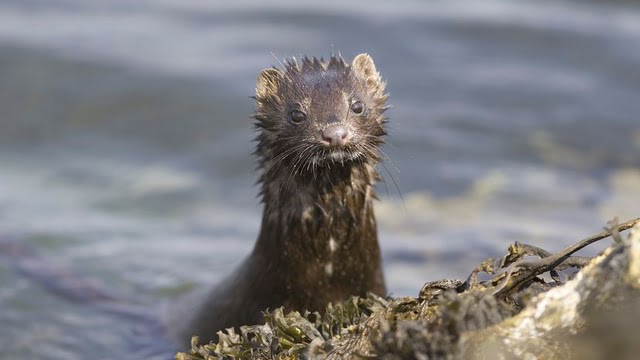Quck answer
Mink are small carnivorous mammals that are native to North America and Europe. They are highly valued for their luxurious fur, and as a result, humans have been breeding them in captivity for hundreds of years.
Unfortunately, the practice of breeding mink for fur has led to a number of negative consequences. For one thing, mink farms have been linked to the spread of diseases such as COVID-19. Additionally, the conditions on these farms are often cramped and unsanitary, leading to an increased risk of illness and injury for the animals.
Furthermore, when mink escape from these farms, they can wreak havoc on local ecosystems. They are highly adaptable and can easily outcompete native species for food and habitat.
Overall, the human exploitation of mink for fur has had a number of negative impacts on both the animals themselves and the environments in which they live. It is important for us to consider these consequences and work towards finding more sustainable and ethical ways to meet our needs for fashion and luxury.

The American mink, originally bred in captivity for its fur, has become an invasive species in Europe due to escapes from fur farms since the 1950s, posing a threat to the native European mink. Both species have thick, water-repellent fur and are semi-aquatic, preferring to live near waterways where they can find their preferred prey. Humans have developed numerous ways to trap and kill mink, putting their populations at risk.
The Introduction of American Mink to Europe
As fur farming became popular in Europe, American mink were introduced in the early 20th century for their larger bodies and denser coats. However, these captive-bred mink proved difficult to keep contained, and many escaped and established themselves as an invasive species. The feral mink population has since become a major threat to the critically endangered European mink.
Dr. IГ±igo Zuberogoitia, a researcher at Estudios Medioambientales Icarus, LogroГ±o, Spain, emphasizes that feral American mink is a distinct species from native American mink in North America. Humans have bred feral American mink in captivity for decades, resulting in different behavior patterns from their wild counterparts. For instance, while wild males of both species are territorial and do not tolerate other males in their area, feral American mink do not seem to mind sharing space with one another. This has led to a significant increase in the population of American mink, causing a major ecological crisis and endangering the European mink population. The global mink fur trade is thriving, with China emerging as a major player due to its lack of animal welfare regulations. In 2017, animal rights activists released thousands of mink from a fur farm in Minnesota, resulting in most of them dying due to heat or killing each other.
FAQ
1. What is the history of mink farming?
Mink farming began in the early 1900s in North America, where wild mink were trapped and bred for their fur. The industry spread to Europe in the 1920s and has since become a global industry, with millions of mink being raised on farms for their fur every year.
2. Why are mink farmed for their fur?
Mink fur is highly valued for its softness, durability, and lustrous appearance. It is used to make coats, hats, and other luxury fashion items. The demand for mink fur has driven the growth of the mink farming industry, which is now a multi-billion dollar global industry.
3. What are the environmental impacts of mink farming?
Mink farming has significant environmental impacts, including the release of nutrients and pollutants into waterways, the spread of diseases to wild mink populations, and the potential for escaped mink to become invasive species. The large amounts of waste generated by mink farms can also contribute to air and water pollution.
4. How do mink farms impact wild mink populations?
Mink farms can spread diseases to wild mink populations, which can have devastating impacts on their health and survival. Escaped mink can also interbreed with wild mink, leading to genetic contamination and the potential for a decline in wild mink populations.
5. What is the ethical issue with mink farming?
Many people consider mink farming to be unethical due to the confinement and suffering of mink on farms. Mink are often kept in small cages and denied the ability to engage in natural behaviors, which can lead to stress, illness, and injury.
6. What is the economic impact of mink farming?
Mink farming is a significant contributor to the global economy, generating billions of dollars in revenue each year. However, the industry is also subject to market fluctuations and can be impacted by changing consumer preferences and regulations.
7. What are some alternatives to using mink fur?
There are many alternatives to using mink fur, including synthetic materials, recycled fur, and plant-based materials. Many fashion companies are also exploring new materials and production methods to reduce their reliance on animal products.
8. What are the regulations surrounding mink farming?
The regulations surrounding mink farming vary by country and region. In some places, mink farming is heavily regulated and subject to animal welfare standards, while in others there are few regulations in place. Some countries have banned or restricted the practice of mink farming altogether.
9. What can individuals do to reduce the impact of mink farming?
Individuals can reduce the impact of mink farming by choosing not to buy products made from mink fur and supporting companies that use alternative materials. They can also advocate for stronger animal welfare regulations and support conservation efforts to protect wild mink populations from the impacts of mink farming.





Leave a Reply